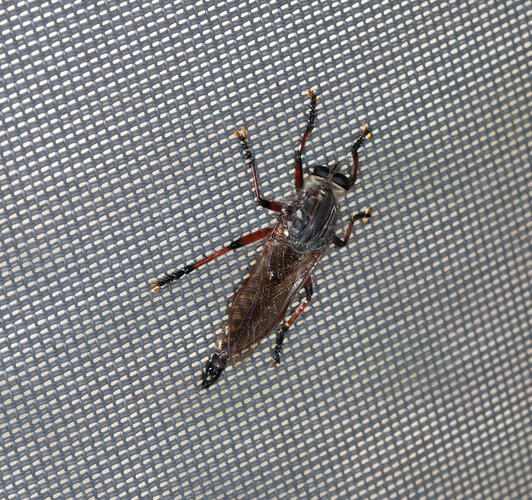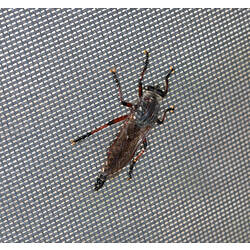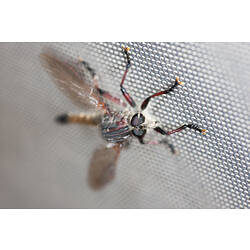General Description
This species has large eyes, white hairs on the face, a powerful and dome-shaped thorax (chest), large wings and a long, thin abdomen. Body length up to 4 cm.
Biology
The name 'robberfly' reflects the notoriously aggressive predatory behaviour of these animals. They feed mainly on other insects. Their hunting method is to wait in ambush and then catch their prey in flight. They have a preference for hunting the introduced honey-bee.
Distribution
South-eastern Australia.
Habitat
Open eucalypt forests and woodlands.
More Information
-
Animal Type
-
Animal SubType
-
Brief Id
A powerfully built, bristly fly with a short, stout proboscis enclosing the sharp sucking tube. Robberflies are aggressive predators.
-
Maximum Size
4 cm
-
Habitats
-
Diet
Insects
-
Endemicity
-
Commercial
No
-
Conservation Statuses
CITES: Not listed, FFG Threatened List: Not listed, EPBC Act 1999: Not listed, IUCN Red List: Not listed
-
Taxon Name
-
Scientific Author
(Wiedemann, 1828)
-
Common Name
Hercules Robberfly
-
Kingdom
-
Phylum
-
Subphylum
-
Class
-
Order
-
Superfamily
-
Family
-
Subfamily
-
Genus
-
Species Name
hercules



